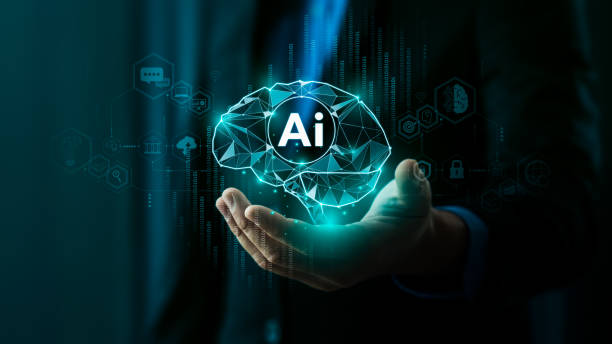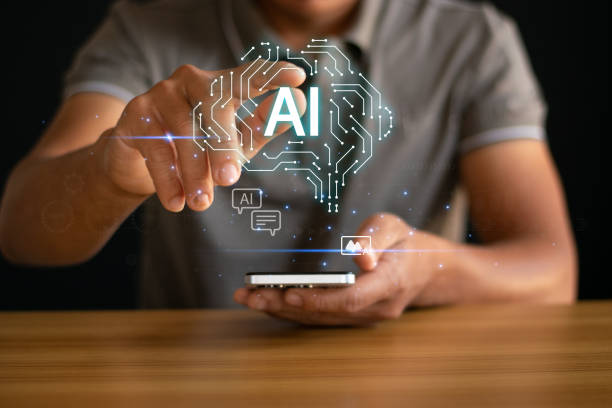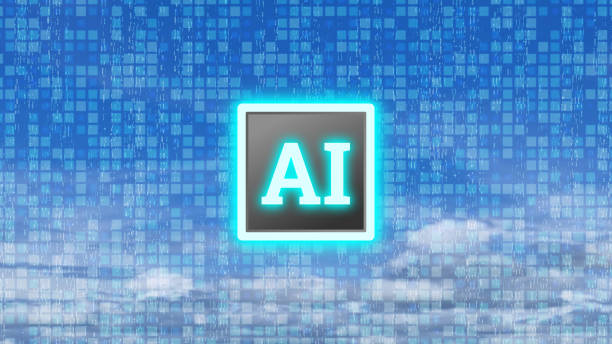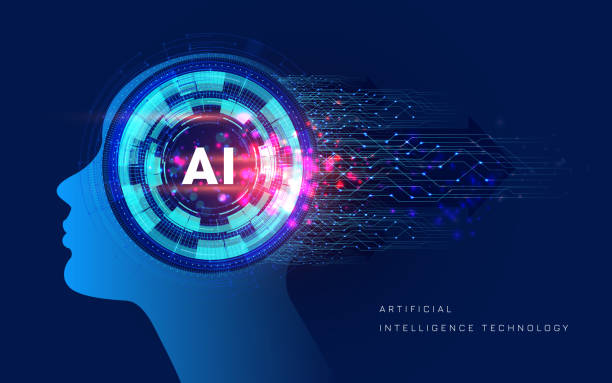What is an AI Assistant and How Does it Work?

An #AI_Assistant is a software or system designed using artificial intelligence (AI) to help users perform various tasks.
These tasks can include answering questions, managing time, creating content, performing complex calculations, and even controlling other devices.
The basis of an AI assistant’s work is Natural Language Processing (NLP), Machine Learning (ML), and other AI techniques.
NLP helps the assistant understand and interpret human language, while ML allows it to learn from data and improve its performance.
In general, an AI assistant consists of these components: 1.
A user interface (UI) which can be an application, website, or even a physical device.
2.
A natural language processing engine that is responsible for analyzing and understanding user requests.
3.
A knowledge base that includes the information and data needed to answer questions and perform tasks.
4.
A machine learning engine that helps the assistant learn from its experiences and improve its performance.
AI assistants can work seamlessly with other systems and applications, helping users increase their productivity and perform their tasks more effectively.
For a better understanding of how these systems work, you can refer to online resources.
Are you losing potential customers due to an unprofessional website? Resaweb is your answer! With our specialized corporate website design services:
✅ Enhance the credibility and standing of your business
✅ Experience attracting more targeted customers
⚡ Take action now to receive a free consultation!
Amazing Applications of AI Assistants in Everyday Life

AI assistants are no longer just a science fiction idea, but have become an integral part of our daily lives.
From answering simple questions to managing complex projects, the applications of AI assistants are vast and varied.
For example, voice assistants like Siri and Alexa help us play music, make calls, and even control our homes.
In the field of education, AI assistants can help students learn new concepts and assist teachers in evaluating student performance.
In the business world, AI assistants can help customers solve problems, answer their questions, and even increase sales.
Also, in the medical field, AI assistants can help doctors diagnose diseases and provide appropriate treatments.
By analyzing medical data and images, these systems can identify patterns that remain hidden from the human eye.
In healthcare, these tools allow patients to manage their medical appointments, remember their medications, and even consult with their doctors remotely.
These are just a few examples of the amazing applications of AI assistants in our daily lives, and with the advancement of technology, it is expected that these applications will become more widespread every day.
Advantages and Disadvantages of Using AI Assistants

Using AI assistants has many advantages.
These tools can help us manage our time more effectively, perform our tasks faster and more accurately, and even make better decisions.
However, using AI assistants also has disadvantages.
One of the most important disadvantages is over-reliance on these tools.
If we become too dependent on AI assistants, we may lose our ability to perform tasks independently.
Also, AI assistants may collect our personal information and use it for illegitimate purposes.
For example, companies that develop AI assistants may sell our information to advertisers or use it to manipulate our behavior.
Therefore, it is important to be aware of the potential risks of using AI assistants and take steps to protect our privacy.
Another drawback of these tools is the possibility of mistakes and errors.
AI assistants are not yet perfect and may make incorrect decisions in some cases.
These mistakes can lead to serious problems, especially in sensitive areas such as medicine and finance.
For example, an AI assistant used to diagnose diseases may provide an incorrect diagnosis and endanger the patient’s life.
Finally, the use of AI assistants can lead to job losses.
With the advancement of technology, many of the tasks that were previously performed by humans can now be performed by AI assistants.
This can lead to increased unemployment and economic inequality.
| Advantages | Disadvantages |
|---|---|
| Increased productivity | Over-reliance |
| Reduced errors | Collection of personal information |
| Better decision-making | Possibility of mistakes |
| Time-saving | Job losses |
How to Choose the Right AI Assistant?

Choosing the right AI assistant can be difficult, especially if you are not familiar with this technology.
To choose the right AI assistant, you need to pay attention to a few points.
Firstly, you need to accurately identify your needs.
What tasks do you want to delegate to the AI assistant? What are your expectations of it? Secondly, you need to compare the different features of AI assistants available on the market with each other.
Look for an assistant that has the features you need and fits your budget.
Thirdly, before buying, be sure to try the trial version of the AI assistant.
This will help you become familiar with how it works and make sure it meets your needs.
Fourthly, pay attention to the opinions and feedback of other users.
The opinions of other users can help you choose the right AI assistant.
Fifthly, make sure you have technical support for the AI assistant.
If you encounter a problem while using the AI assistant, you should be able to get help from its technical support.
Finally, pay attention to the comparison of different AI assistants available on the market and choose the best option for yourself.
By considering these points, you can choose a suitable AI assistant and benefit from its advantages.
Does your company’s website perform as it should for your brand? In today’s competitive world, your website is your most important online tool. Resaweb, a specialist in professional corporate website design, helps you to:
✅ Attract the credibility and trust of customers
✅ Turn website visitors into customers
⚡ Get a free consultation!
The Future of AI Assistants: Prospects and Challenges

The future of AI assistants looks very bright and promising.
With the advancement of technology, these tools are becoming more powerful and intelligent every day and can perform more complex tasks.
It is expected that in the future, AI assistants will be more widely used in our daily lives and help us perform various tasks.
For example, in the future, AI assistants may help us drive, manage our finances, and even take care of our health.
However, the future of AI assistants also has challenges.
One of the most important challenges is the issue of privacy.
With the collection of personal information by AI assistants, the risk of misuse of this information increases.
Therefore, it is important to take steps to protect our privacy and ask companies that develop AI assistants to respect users’ privacy.
Another challenge is the issue of security.
AI assistants may be the target of cyber attacks and hackers may be able to use them to access our personal information or control our devices.
Therefore, it is important to use AI assistants with high security and update their software regularly.
Finally, the issue of ethics is also one of the important challenges of the future of AI assistants.
With the advancement of technology, AI assistants may be able to do things that are not ethically acceptable.
Therefore, it is important to develop laws and regulations for the use of AI assistants and prevent the misuse of these tools.
Security and Privacy in Using AI Assistants
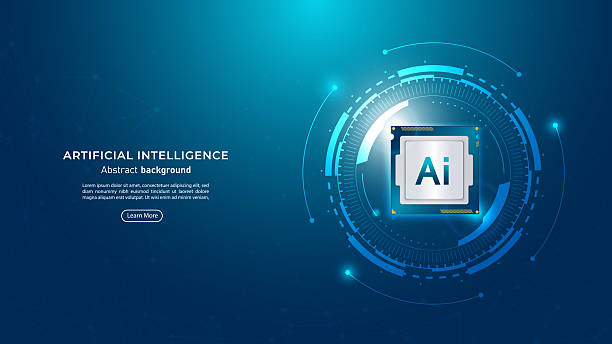
Security and privacy are among the most important concerns in using AI assistants.
AI assistants need access to our personal information to perform their tasks.
This information can include our name, address, phone number, email, financial information, and even our health information.
If this information falls into the wrong hands, it can lead to serious misuse.
Therefore, it is important to take steps to protect our personal information when using AI assistants.
Firstly, we need to use AI assistants with high security.
Look for assistants that use strong encryption to protect your information and have transparent privacy policies.
Secondly, we need to limit the AI assistant’s access to our information.
Only allow the AI assistant to access the information it needs to perform its tasks.
Thirdly, we need to update the AI assistant’s software regularly.
Updates usually include security patches that protect against software vulnerabilities.
Fourthly, we need to use strong passwords for our accounts and change them regularly.
Fifthly, we need to be careful of suspicious emails and messages and avoid opening links or downloading attachments from unknown sources.
Finally, we need to use privacy tools to protect our information from online tracking.
AI Assistants and the Transformation of Businesses

AI assistants have a lot of potential to transform businesses.
These tools can help businesses perform various tasks, including: 1.
Improving customer service.
AI assistants can help customers solve problems, answer their questions, and even record their orders.
2.
Increasing sales.
AI assistants can offer personalized suggestions to customers and encourage them to buy.
3.
Reducing costs.
AI assistants can automatically perform many repetitive and time-consuming tasks, thereby helping businesses reduce costs.
4.
Improving decision-making.
AI assistants can help businesses make better decisions by analyzing data.
5.
Increasing innovation.
AI assistants can help businesses increase innovation by providing new ideas.
For example, in the field of marketing, AI assistants can help businesses identify target audiences, create engaging content, and optimize advertising campaigns.
In the field of human resources, AI assistants can help businesses hire skilled labor, train employees, and manage their performance.
In the field of production, AI assistants can help businesses optimize production processes, reduce waste, and improve product quality.
In general, AI assistants can help businesses increase productivity, reduce costs, and improve competitiveness.
| Area | Application of AI Assistants |
|---|---|
| Marketing | Identifying target audiences, creating content, optimizing campaigns |
| Human Resources | Hiring, training, performance management |
| Production | Optimizing processes, reducing waste, improving quality |
| Customer Service | Answering questions, solving problems, recording orders |
AI Assistants in Education

AI Assistants can play an important role in transforming education.
These tools can help students learn new concepts, assist teachers in evaluating student performance, and even help school administrators manage resources.
For example, AI assistants can help students learn foreign languages, solve math problems, and write essays.
By providing personalized feedback, these tools can help students identify their strengths and weaknesses and focus on improving them.
AI assistants can also help teachers create engaging educational content, deliver interactive lessons, and assess student performance.
By analyzing student data, these tools can help teachers identify the individual needs of each student and tailor their lessons accordingly.
Finally, AI assistants can help school administrators manage resources, plan curricula, and communicate with parents.
By collecting and analyzing data, these tools can help school administrators make better decisions and improve the performance of their schools.
In general, AI assistants can help improve the quality of education, increase student engagement, and reduce costs.
Is your online store ready to attract maximum customers and sell more? Resaweb transforms your online business with modern and efficient online store design.
✅ Increase speed and improve SEO
✅ Excellent user experience on mobile and desktop⚡ Get a free online store design consultation from Resaweb!
Ethical Considerations in Developing and Using AI Assistants

The development and use of AI assistants raise important ethical considerations.
One of the most important considerations is the issue of discrimination.
AI assistants may discriminate based on the data they have been trained on.
For example, an AI assistant used to evaluate resumes may unconsciously ignore the resumes of women or people belonging to ethnic minorities.
Therefore, it is important to use diverse and non-discriminatory data when developing AI assistants and to design our algorithms in a way that prevents discrimination.
Another ethical consideration is the issue of transparency.
AI assistants often make complex decisions that are not understandable to humans.
Therefore, it is important to design AI assistants in a way that they present their decisions in a transparent and explainable manner.
Finally, the issue of accountability is also an important ethical consideration in the development and use of AI assistants.
If an AI assistant makes a wrong decision, who will be responsible? Will the AI assistant developer be responsible, or the user who uses it? Therefore, it is important to develop laws and regulations to determine responsibility for the decisions of AI assistants.
In general, responsible development and use of AI assistants requires careful attention to ethical considerations.
How to Build an AI Assistant
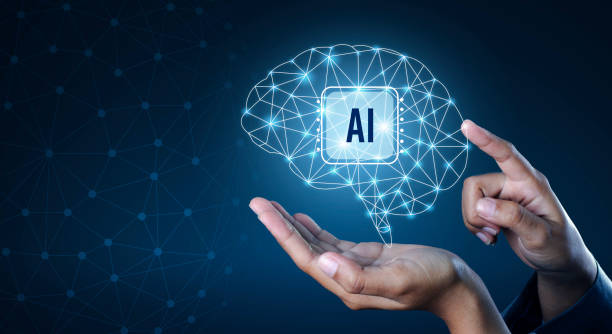
Building an AI assistant is a complex project that requires specialized knowledge and skills in various fields such as artificial intelligence, natural language processing, and programming.
The general steps to build an AI assistant are as follows: 1.
Define the goal.
Before starting to build the AI assistant, you must accurately define your goal.
What tasks do you want to delegate to the AI assistant? What features should it have? 2.
Collect data.
To train the AI assistant, you need to collect a lot of data.
This data can include texts, images, sounds, and other types of data.
3.
Choose AI algorithms.
Depending on the type of tasks you want to delegate to the AI assistant, you must choose the appropriate AI algorithms.
4.
Train the model.
After selecting the AI algorithms, you must train your model using the data you have collected.
5.
Evaluate the model.
After training the model, you must evaluate it to make sure it performs well.
6.
Develop the user interface.
After evaluating the model, you must develop a user interface for your AI assistant.
7.
Deploy the AI assistant.
After developing the user interface, you can deploy your AI assistant.
To build a simple AI assistant, you can use ready-made tools and platforms such as Dialogflow and Rasa.
These tools help you to build a simple AI assistant without the need for specialized knowledge in the field of artificial intelligence.
#Artificial_Intelligence
Frequently Asked Questions
| Number | Question | Answer |
|---|---|---|
| 1 | What is an AI Assistant? | An AI assistant is a software application that uses artificial intelligence to assist users in performing various tasks, providing information, or automating processes. |
| 2 | What are some examples of AI Assistants? | Popular examples include Siri, Google Assistant, Alexa, and Cortana. |
| 3 | How does an AI Assistant work? | AI assistants typically use Natural Language Processing (NLP) to understand user voice or text commands and Machine Learning to improve their performance. |
| 4 | What capabilities does it have? | Capabilities such as answering questions, setting reminders, playing music, sending messages, controlling smart devices, and providing weather information. |
| 5 | How is data security handled in AI Assistants? | Data security is a major concern. Companies strive to protect user data using encryption and privacy policies, but users should always be aware of potential risks. |
| 6 | Can AI Assistants understand emotions? | Currently, AI assistants cannot understand real emotions, but they can recognize tone and words associated with emotions and provide appropriate responses. |
| 7 | What are the uses of AI Assistants in the workplace? | In the workplace, they can be used to schedule meetings, manage emails, search for information, and even help write drafts of documents. |
| 8 | What will the future of AI Assistants be like? | In the future, they are expected to be smarter, more personalized, and have more capabilities, so that they can actively anticipate users’ needs and even help in complex decision-making. |
| 9 | What is the difference between an AI Assistant and a Chatbot? | An AI assistant typically has a wider range of capabilities and interactions (often voice-based), while chatbots are typically focused on specific tasks in a text-based context. |
| 10 | How can an AI Assistant be used to its best advantage? | For optimal use, you should familiarize yourself with voice commands and capabilities, synchronize it with other devices, and allow it to learn your usage patterns through interactions. |
And other services of Rasa Web Advertising Agency in the field of advertising
Smart Advertising Campaign: Transform user interaction with the help of dedicated programming.
Smart Marketing Automation: A new service to increase digital branding through an SEO-oriented content strategy.
Smart Direct Marketing: An effective tool to increase sales with the help of marketing automation.
Smart Custom Software: A new service to increase user interaction by customizing the user experience.
Smart Custom Software: Transform site visits with the help of intelligent data analysis.
And more than hundreds of other services in the field of internet advertising, advertising consulting and organizational solutions
Internet Advertising | Advertising Strategy | Advertorial
Sources
Comprehensive Guide to Building an AI Robot in Telegram with Python
,The future of work depends on artificial intelligence; What jobs does artificial intelligence threaten?
,What is artificial intelligence? How does artificial intelligence work?
,AI assistants play a more important role in service than first income
? For the peak of your business in the digital world, Rasaweb Digital Marketing Agency paves the way for your growth and success by providing comprehensive services including professional website design, SEO optimization and social media management.
📍 Tehran, Mirdamad Street, next to Central Bank, South Kazerun Alley, Ramin Alley No. 6

